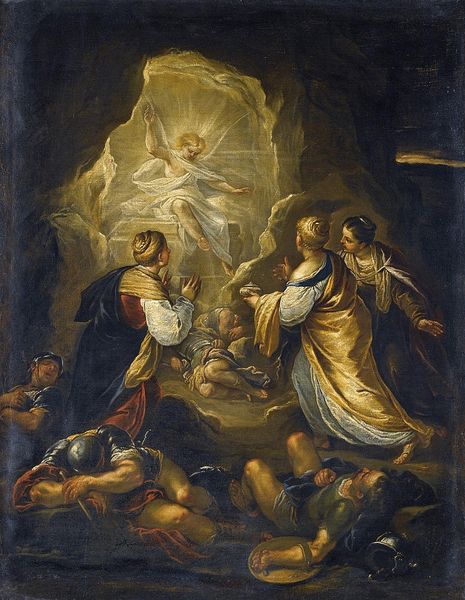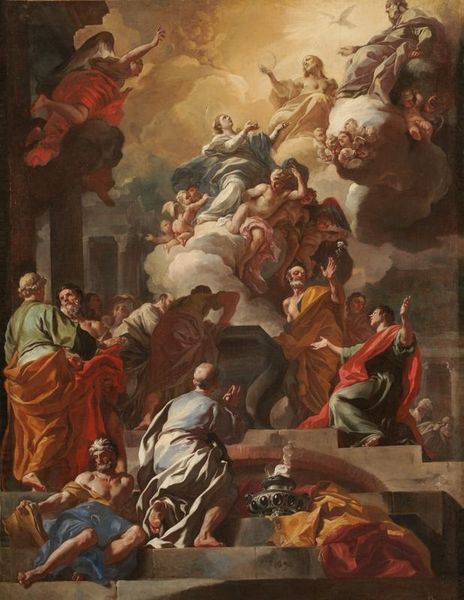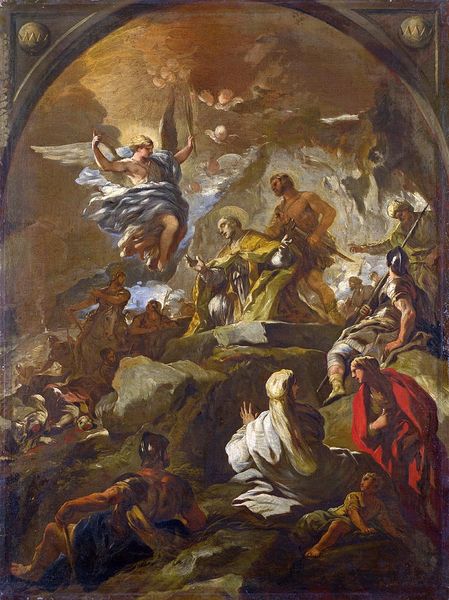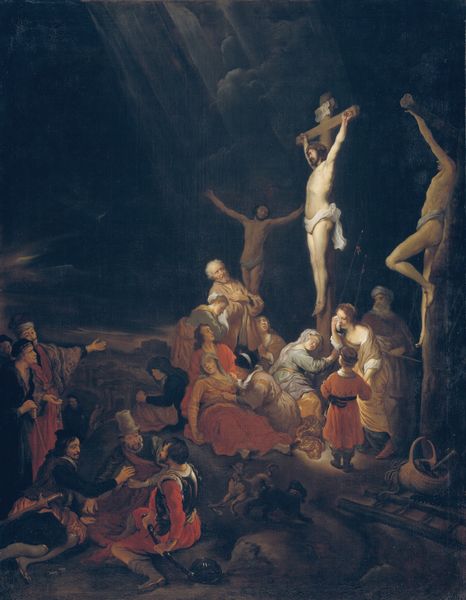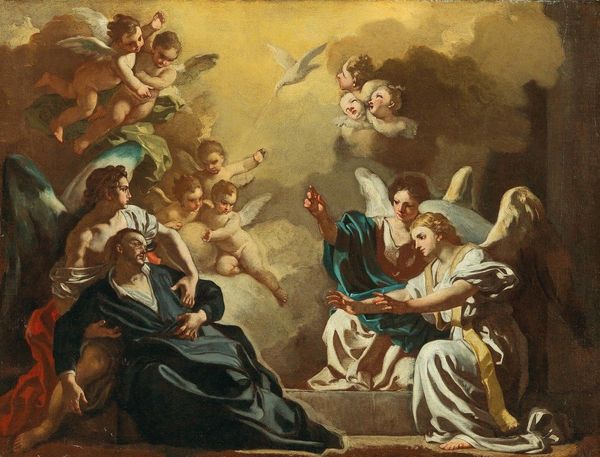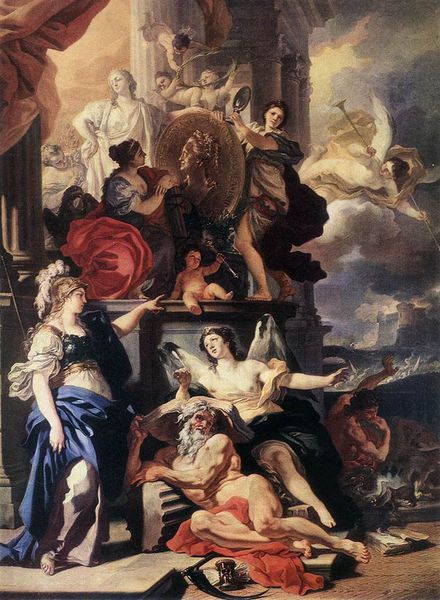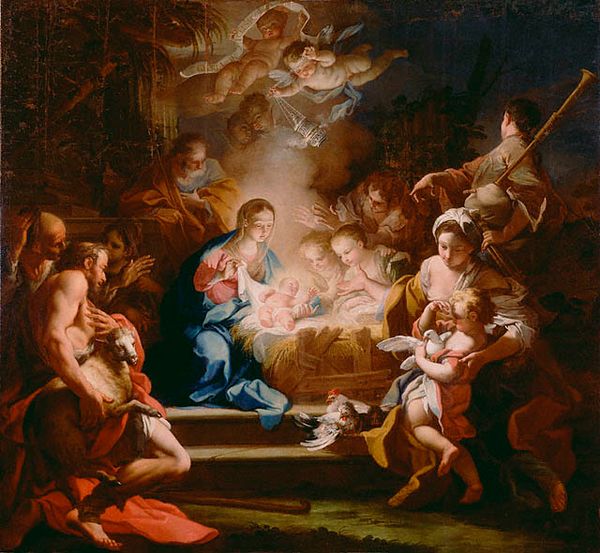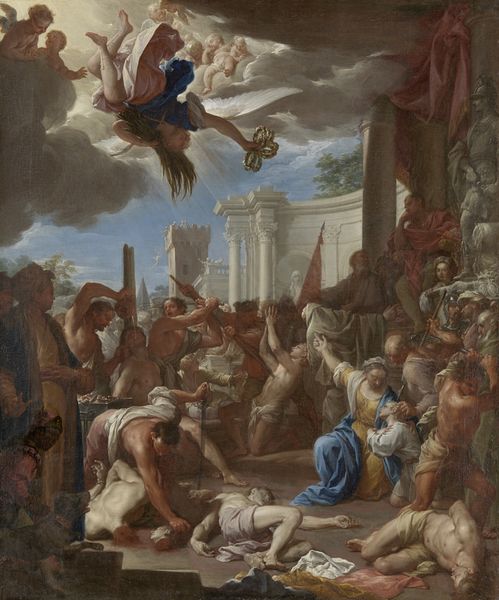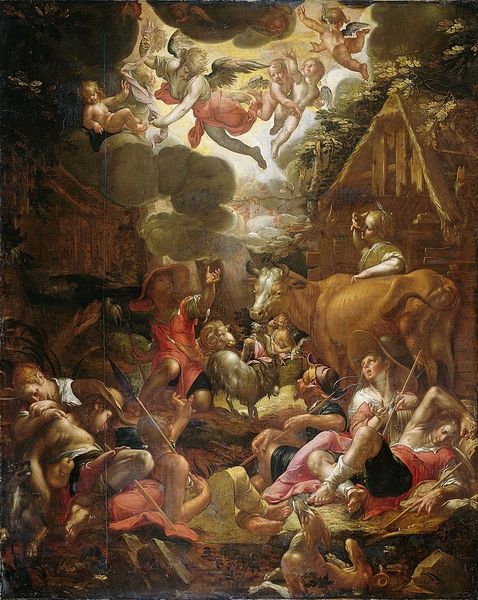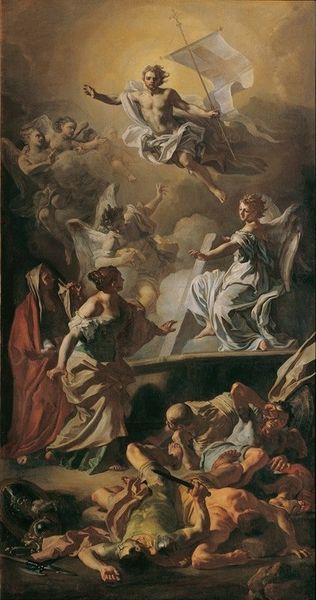
painting, oil-paint
#
narrative-art
#
baroque
#
painting
#
oil-paint
#
figuration
#
history-painting
Dimensions: height 79 cm, width 63.5 cm, depth 6 cm
Copyright: Rijks Museum: Open Domain
Curator: Standing before us is "The Adoration of the Shepherds" by Abraham Hondius, created in 1663. It’s an oil on canvas depicting the iconic biblical scene. Editor: The dynamism is quite striking, isn't it? All the figures and light seem pulled towards the center, as though subject to the same unseen force. It certainly sets the tone for a monumental event. Curator: The use of chiaroscuro is compelling, emphasizing the contrast between the humble shepherds and the divine announcement, the working-class laity versus the angelic presence, to reveal a clear power structure. The angels are free, unbound by the earthly. Editor: Precisely. Note the interplay of dark and light that does not only delineate the space but guides the viewer's eye from the dramatic celestial display at the top, spiraling downward through the crowd of adoring figures, culminating in the radiant focal point that is the Christ Child. Curator: Indeed, and understanding this within the broader socio-political context, Hondius might subtly comment on themes of piety and religious power in a rapidly changing Dutch society. Religious subjects and iconography have long been part of Dutch cultural discourse. Hondius provides commentary and perhaps suggests who it empowers and disempowers. Editor: Beyond such political interpretation, there’s much to observe concerning its formal construction. Observe how Hondius balances the composition, placing a multitude of figures on one side yet creates visual harmony via the strategic use of light and a counterbalancing dark mass of the stable's opening. Curator: Yes, but how are those choices further underlining issues of social hierarchy? Consider how light washes over the divine figures but casts the everyday workers into deeper shadows. Hondius’s painting makes no mistake about whose experiences are placed in higher regard. Editor: Fair point. Yet still, what's most fascinating here is how effectively Hondius manipulates formal components—color, composition, light—to generate such a spiritually potent viewing experience. Curator: Exactly. So by viewing Hondius’ Adoration not just as an aesthetic experience but through an intersectional lens, we see that these aesthetic choices create greater social awareness. Editor: Yes. A painting, in this case, which skillfully transforms the narrative into a study of form and societal relations. Curator: Hopefully this brief conversation offers some avenues for seeing “The Adoration of the Shepherds” as more than merely a familiar biblical scene. Editor: Agreed. Now viewers might explore it from both aesthetic and theoretical points of view.
Comments
No comments
Be the first to comment and join the conversation on the ultimate creative platform.
